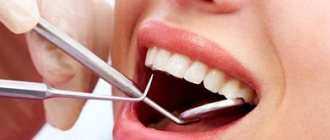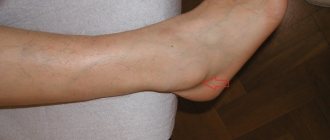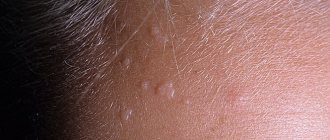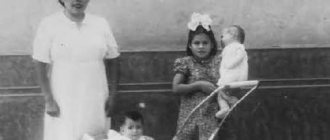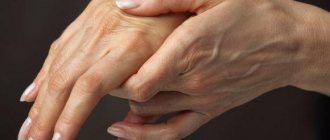Causes of warts during pregnancy
During pregnancy, the body experiences stress: the functioning of all systems is restructured. This is the main reason for the awakening of a dormant virus.
Dermatologists call the following leading factors for the appearance of warts in expectant mothers:
- changes in hormonal levels. An increase in progesterone levels softens the epithelium and makes the skin more sensitive;
- exacerbation of chronic ailments due to toxicosis and decreased immunity. Most often, the formation of warts is caused by diseases of the gastrointestinal tract (gastritis, cholecystitis);
- weight gain causing damage to skin connective tissue (stretch marks);
- uncomfortable clothes.
Prevention
The following recommendations will help prevent the appearance of warts:
- Support your immunity. Watch your diet and take vitamins during the cold season.
- Follow the rules of personal hygiene.
- Don't forget to wear shoes at the beach, pool and other public places.
- Monitor the condition of your skin. Avoid diaper rash.
- Treat any cracks or scratches on the skin with an antiseptic, especially on the face, hands and soles.
Following these simple rules will help avoid the development of warts during pregnancy. If any suspicious formations appear on the skin, you should consult a doctor.
Why are warts dangerous for pregnant women?
Skin growths on the body do not affect the course of pregnancy and do not harm the health of the unborn baby. Plantar warts cause discomfort. There is a risk of accidentally damaging the growth.
More serious problems lie in the accelerated growth of warts. The proliferation of microorganisms often leads to their merging into groups. This leads to the formation of plaques. They can cause pain, especially when in contact with clothing.
important Genital warts (genital warts) are dangerous.
Mucous membranes are an ideal nutrient medium. As they develop, condylomas can block the birth canal, complicate or make natural labor impossible. A damaged wart can infect a child during its birth.
Warts and pregnancy
They are benign neoplasms. The appearance of growths on the body is caused by the human papillomavirus (HPV). It is worth noting that, according to statistics, 90% of the entire population of the planet are its carriers. Experts say that the occurrence of such growths on the skin is associated with endocrine disorders, decreased immunity, and tissue trophic disorders. Pregnancy, especially at its initial stage, is a colossal burden on the body. Of course, it is associated with a decrease in the protective forces of the female body. This becomes the trigger for the papilloma virus to become more active.
But under no circumstances should a woman panic about this. Most warts that appear on the face, upper and lower extremities simply cannot harm the fetus or negatively affect its development. New growths are unpleasant only psychologically and aesthetically.
But if we are talking about genital warts in the vagina or cervix, called condylomas, then they can pose a danger during pregnancy and during childbirth. The baby can become infected while passing through the mother’s birth canal.
Is it possible to remove warts during pregnancy?
During pregnancy, any interference in the vital functions of the systems of a weakened body is undesirable. Particular caution should be exercised in the first and third trimesters.
If the wart does not cause discomfort or interfere with normal delivery, it is better to postpone the cosmetic procedure until the baby is born.
important You cannot remove warts yourself. Unprofessional actions can provoke the spread of the virus and an increase in the number of warts, as well as dangerous complications, including oncology.
When is removal absolutely necessary?
Warts are removed strictly as prescribed by the doctor. Self-removal can not only cause harm, but also provoke premature birth. The following situations may serve as grounds for prescribing an operation:
- when a pregnant woman experiences hyperactive growth of tumors, as well as a sharp increase in the number of viral cells in the blood;
- if warts change their shape, as well as their contents, transforming into malignant tumors;
- in cases where any touch to the wart causes acute sharp pain;
- when the harm caused by a wart is much greater than the harm from the process of its removal.
If a wart is just a cosmetic inconvenience, then you should wait until after childbirth to remove it. Moreover, in half of the cases, after a woman gives birth, her hormonal levels improve and papillomas can disappear on their own without surgical intervention. Some doctors even equate the concept of “warts and pregnancy,” since during this period the risk of their occurrence is very high.
What are the dangers of removing warts during pregnancy?
- Medicines (including folk remedies) can cause allergic reactions. If a woman was not previously prone to such manifestations, during pregnancy the immune system becomes hypersensitive. An acquired allergy can be passed on to a child.
- Some procedures can cause premature labor. For example, cryotherapy, which is controversial among doctors.
- Surgical methods are stressful not only for the woman, but also for the fetus.
Only specialists will be able to correctly assess the balance of benefit and harm and determine safe methods.
Consultation with a dermatologist and gynecologist is required.
Types and characteristics of warts
Whether it is possible to remove warts during pregnancy depends primarily on their type.
Dermatologists distinguish:
- Plantar warts. Formation of a dense structure with an outer stratum corneum. They are absolutely safe, but can cause significant discomfort to a pregnant woman when walking.
- Filiform warts. Soft papillomas are flesh-colored, often having a thin bridge (pedicle). They are located mainly under the armpits, in the neck, chest, and on the eyelids. They can rub and be damaged by mechanical contact: in contact with linen and tight clothing, during massage and other procedures.
It is recommended to remove such formations during pregnancy if they are constantly injured, which is fraught with the appearance of a long-term non-healing, bleeding wound. An infection can penetrate into it, which is extremely undesirable for a pregnant woman.
- Genital warts. They are multiple soft pink papillomas with a keratinized surface. They have the usual elongated shape, and over time they can merge into papillary growths similar in shape to cauliflower.
Condylomas appear exclusively on the mucous membranes of the body. Favorite places for their localization:
- labia,
- vagina,
- Cervix,
- area around the anus,
- urethra,
- less often - the oral cavity.
The growth of genital warts is often accompanied by severe itching. They need to be removed as planned, and during pregnancy you should get rid of condylomas immediately. Such formations in the genital area are a constant source of HPV and are unsafe for the child, since there is a risk of infection during childbirth.
Methods for treating warts during pregnancy
If there is a threat of warts growing, changing their color and size, doctors suggest removing the growths.
Treatment usually begins with taking immunostimulants. Based on the examination, the doctor prescribes antioxidants, vitamin complexes, products based on human interferon and other adaptation drugs.
In some cases, doctors allow surgical methods for removing common warts.
Electrocoagulation
The method involves destroying warts with various beams of a surgical laser:
- carbodioxide ray promotes rapid blood clotting, prevents further spread of the human papillomavirus;
- The erbium beam removes the tumor layer by layer by evaporation.
Laser surgery does not injure the skin and does not cause complications.
Usually performed using local anesthesia, which is undesirable for the fetus.
Cryodestruction or freezing
The method is based on removing warts with liquid nitrogen. The tissue affected by the virus is destroyed due to changes in the structure of the cell. The wound does not bleed and does not leave scars.
The method does not require anesthesia, but sometimes discomfort occurs. The disadvantages include long, up to 1 month, healing.
Surgical excision
Used only when it is necessary to conduct research on infected tissue. Using a scalpel, an incision is made into a healthy area next to the wart. After removing the tumor, small sutures are applied.
Removal of genital warts carries significant risk to the fetus. The operation is performed in emergency cases, having previously received the results of a biopsy and a cytological smear (Papanicolaou test). After making sure that the wart is not predisposed to degenerate into a cancerous tumor, the doctor may prescribe surgical excision.
Types of warts and their level of danger to the fetus and pregnant woman
In medicine, there are two types of warts that most often affect the body of pregnant women:
- papillomas are ordinary warts that look like brown skin lumps;
- genital warts are epithelial formations that appear on the genitals.
An ordinary papilloma most often does not cause pain, but it can cause discomfort if it is touched frequently. These neoplasms do not cause harm to either the mother or the child.
Condylomas, on the contrary, can pose a clear danger, threatening both the birth process and the health of the mother and child. Warts that form on the mucous membranes of the vagina can multiply quickly, since the microflora of this part of the body is extremely favorable. When condylomas are grouped in the birth canal, forming compactions, the likelihood of infection of the child during natural delivery is quite high.
Advice! There is no need to rub or scratch the warts, as this can damage their surface and aggravate the course of the disease.
Traditional methods for removing warts during pregnancy
Restrictions in the use of surgical methods and medications force women to turn to traditional medicine.
It should be remembered: even the most harmless, at first glance, recipe can cause an acute reaction of the immune system. You should definitely consult a doctor.
important The general rule for all folk recipes is to act directly on the wart without affecting healthy skin.
To protect the undamaged area, you can use a children's hypoallergenic adhesive plaster. They apply it to the area around the wart.
Treatment of skin growths with retinol acetate (vitamin A) is considered the most gentle and safe. Daily lubrication effectively eliminates even deep papillomas.
Traditional recipes that have proven themselves to be quite good:
- soak a piece of cotton swab in apple cider vinegar and apply to the wart twice a day for 15–20 minutes;
- grate raw potatoes and apply the pulp to the tumor up to 5 times a day;
- cut the stem of the celandine (preferably in an ecologically clean area), moisten the wart with the yellow juice in the morning and evening;
- take a solution of hydrogen peroxide into a pipette and drop 1 drop onto the wart 2 times a day;
- At night, apply a bandage with the pulp of an aloe leaf or a crushed clove of garlic.
important When using folk remedies, it is necessary to monitor skin reactions. Redness, itching, and peeling are a signal to refuse the procedure. Do not use vinegar essence or other aggressive substances.
Warts do not look aesthetically pleasing, and many pregnant women want to get rid of them. Only a specialist can assess the correctness of such a decision and calculate the possible risk. Do not neglect consulting a dermatologist.
It is important to know that normalization of hormonal levels after the birth of a baby contributes to the disappearance of a significant part of warts.
Don't forget about prevention
To prevent the growth of warts, doctors advise paying more attention to generally accepted hygiene rules during pregnancy. Personal hygiene products for a pregnant woman should be strictly individual. Particular attention should be paid to excluding sexual transmission of HPV. Both partners need to undergo treatment for papillomavirus to prevent re-infection.
Warts can be removed during pregnancy only as directed by a dermatologist or gynecologist. After the baby is born, the hormonal levels stabilize, which contributes to the spontaneous disappearance of some papillomas.
Related Posts
leave a comment

